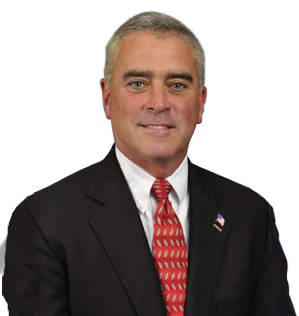
Back in 1931, historian James Truslow Adams endowed us with our first definition of what we call “the American Dream.” He wrote: “The American Dream is that dream of a land in which life should be better and richer and fuller for everyone, with opportunity for each according to ability or achievement.”
This is what our Founders were after when they structured our government around protecting every American’s right to “life, liberty, and the pursuit of happiness.” The goal was – and is – to create a country in which each citizen is free to carve out their own destiny, and achieve whatever they are capable of in their lives. It’s not about guaranteeing an equal outcome for every citizen, but rather about structuring a society where opportunity is available for all who would seize it. That is the essence of what we still strive for today.
But what about the parts of our country where “opportunity for all” seems more like a lofty ideal than an actual reality? What about our distressed inner cities, rural areas entrenched in poverty, or the devastated communities of Puerto Rico? A 2017 study by the Economic Innovation Group found that “52.3 million Americans live in economically distressed communities… That represents one in six Americans, or 17 percent of the U.S. population.” A historical lack of investment in these communities hobbles their potential to grow and prosper.
We simply cannot afford to leave that many Americans on the sidelines of prosperity. Not only are they missing out on what our country has to offer, our country is missing out on what they can contribute. That is where the idea of “Opportunity Zones” comes in. Included as a bipartisan provision in the Tax Cuts and Jobs Act that became law on Dec. 22, 2017, there now is a specific incentive for investors to make long-term investments in designated Opportunity Zones: communities across America that remain mired in economic hardship.
It works like this: the legislation empowers governors to identify localities within their state lines that meet the definition of distressed communities, or areas in desperate need of economic opportunity. To qualify, the area must be “a census tract with a poverty rate of at least 20 percent and a median family income of less than 80 percent of the statewide median family income.” These low-income communities are then designated as “Opportunity Zones,” which provide federal tax benefits to investors who choose to invest there. Additional incentive is provided if an investor chooses to invest for at least 10 years.
This new capital goes into an Opportunity Fund, which supports development projects like job training and investing in small businesses or start-ups. The goal is to spur job creation and economic development in communities that have been too long neglected, by harnessing private investment and the power of the free market. As the New York Times reported: “The provision is the first new substantial federal attempt to aid those communities in more than a decade. … If the zones succeed, they could help revitalize neighborhoods and towns that are starved for investment.”
So far, Opportunity Zones have been approved in 46 states, including here in Ohio. In fact, 45 Opportunity Zones have already been designated in Ohio’s 2nd Congressional District alone. Can you imagine the difference that private investment could make in so many historically overlooked communities? It’s no wonder that governors across the country from both political parties have spoken out about what this could mean for their state’s lowest income communities.
An important aspect of Opportunity Zones is that they were designed to be fluid, so that once an Opportunity Zone is lifted out of poverty, it will eventually no longer meet the qualifications to remain on the list of Opportunity Zones. The intention here is to create a continual ebb and flow of dynamic capital, so that investments aren’t static and don’t become too concentrated. Instead, once one zone is thriving economically, investors will be encouraged to begin to invest in Opportunity Funds within other underserved communities.
The best part? This isn’t a talking point: it’s the law of the land. It’s the type of bipartisan policy with real-world impact that should excite all Americans — Democrats and Republicans alike — who are passionate about effectively addressing poverty and breathing new life into the American dream. It’s an innovative way to incentivize private investors to allocate their capital so that it provides economic growth for communities in desperate need of it. While there is still much to learn and analyze, it could mark the bold beginning of something big.
Opportunity is the enemy of poverty. So instead of fighting poverty with more government programs, this approach fights systemic poverty with the intentional and strategic spread of economic opportunities. It brings us back to the idea that Adams was talking about, back to the idea that sparked this great nation: that the best way to progress as a nation is to protect citizen’s rights and empower their ability to improve their own lives. We never want any American to say they were not given the chance to succeed.
Congressman Brad Wenstrup represents the 2nd Congressional District of Ohio. He serves on the House Permanent Select Committee on Intelligence, the House Armed Services Committee, and the House Veterans Affairs Committee. He is also an active member of the U.S. Army Reserve.


